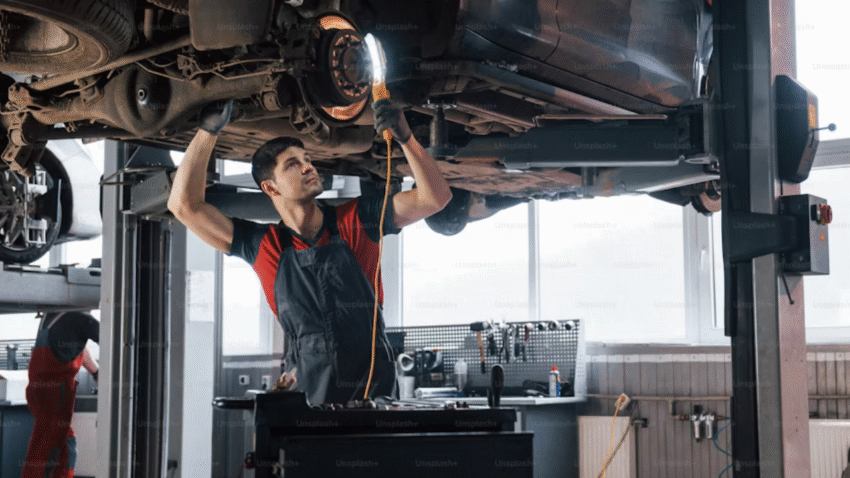Introduction
Epoxy coating is one of the most durable and attractive finishes you can apply to your garage floor. It resists stains, chemicals, and wear while giving the space a professional, polished look. But to get a flawless, long-lasting result, the key lies in the preparation. Learning how to prepare a garage floor for epoxy coating ensures the epoxy bonds properly, prevents peeling, and delivers that showroom-quality finish.
Why Proper Preparation Matters
Applying epoxy without proper prep is a recipe for disappointment. Here’s why preparation is critical:
- Ensures strong adhesion – Epoxy needs a clean, textured surface to bond effectively.
- Prevents peeling and bubbling – Moisture, oil, or dust under the coating can cause failure.
- Reveals hidden issues – Cracks, pits, and stains can be repaired before coating.
- Maximizes durability – Proper prep extends the life of your epoxy coating.
- Improves appearance – Creates a smooth, even surface for a professional finish.
Skipping prep work can mean redoing the entire job, costing more time and money.
Step-by-Step Guide to Preparing a Garage Floor for Epoxy Coating
1. Test for Moisture
Before anything else, check for moisture issues that can prevent epoxy from adhering:
- Plastic sheet test – Tape a 2-foot square of clear plastic to the floor and leave it for 24–48 hours. If moisture collects underneath, address the problem before proceeding.
- Calcium chloride test – A more precise option available at hardware stores for measuring vapor emission rates.
If there’s significant moisture, sealing or waterproofing may be needed before applying epoxy.
2. Clear and Clean the Garage
Remove all vehicles, tools, and storage items. Sweep the entire floor to eliminate dust and loose debris. Good lighting will help you spot stains, cracks, and uneven areas.
3. Degrease the Floor
Oil and grease prevent epoxy from bonding:
- Apply a concrete degreaser to stained spots.
- Scrub with a stiff-bristled brush or floor scrubber.
- Rinse thoroughly with water.
- Allow to dry completely before moving to the next step.
Tip: Use a pressure washer for deep cleaning if needed.
4. Repair Cracks and Holes
Inspect the floor for any cracks, pits, or damage:
- Fill hairline cracks with concrete crack filler.
- Use a patching compound for larger holes or spalls.
- Smooth the patched area with a trowel and let it cure according to product instructions.
Repairs ensure a flat, stable surface and prevent flaws from showing through the epoxy.
5. Etch the Concrete (If Needed)
Epoxy adheres best to a slightly rough, porous surface. If your concrete is smooth, etching is essential:
- Mix a concrete etching solution (often acid-based) according to the manufacturer’s directions.
- Apply evenly across the floor with a watering can or pump sprayer.
- Scrub the surface with a stiff broom.
- Rinse thoroughly with clean water until all residue is removed.
Let the floor dry for at least 24 hours before moving on.
6. Grind the Surface (Alternative to Etching)
Some professionals prefer grinding instead of acid etching:
- Rent a concrete grinder with a diamond grinding wheel.
- Work in overlapping passes to ensure even texture.
- Vacuum dust with a shop vac.
Grinding creates an ideal mechanical profile for epoxy and avoids the need for chemical etching.
7. Check the Surface Profile
Run your hand over the concrete—it should feel like medium-grit sandpaper. This texture allows epoxy to grip firmly. If it feels too smooth, repeat the etching or grinding process.
8. Remove All Dust and Debris
After etching or grinding, thoroughly vacuum the floor. Any dust left behind can compromise epoxy adhesion. Wipe the surface with a damp mop to catch fine particles, then let it dry.
9. Apply a Moisture Barrier (If Needed)
In garages with borderline moisture issues, applying a moisture-blocking primer before epoxy can help prevent peeling. Follow manufacturer instructions for application and curing.
10. Mask and Protect Surrounding Areas
Use painter’s tape and plastic sheeting to protect walls, baseboards, and door frames from epoxy splatter. This step saves cleanup time and ensures clean lines.
11. Final Inspection Before Coating
Do a last check for:
- Remaining dust or debris.
- Any damp spots.
- Imperfections that could show through.
Once you’re satisfied with the condition, you’re ready to mix and apply your epoxy according to product directions.
Common Mistakes to Avoid
- Skipping the moisture test
- Mistake: Applying epoxy on a damp floor.
- Solution: Always test for moisture before starting.
- Not removing all grease
- Mistake: Thinking epoxy will “cover” oil stains.
- Solution: Degrease thoroughly to ensure adhesion.
- Rushing the drying process
- Mistake: Applying epoxy before the floor is fully dry.
- Solution: Allow at least 24–48 hours of drying after cleaning or etching.
- Leaving dust behind
- Mistake: Failing to vacuum after grinding or etching.
- Solution: Use a shop vac and damp mop to remove fine dust.
- Skipping repairs
- Mistake: Coating over cracks or holes.
- Solution: Patch all imperfections before applying epoxy.
Extra Garage Tips & Hacks
- Work in mild weather – Extreme temperatures or humidity can affect epoxy curing.
- Use a leaf blower to quickly clear dust before final vacuuming.
- Apply epoxy soon after prep – Don’t wait days, as dust and moisture can settle on the floor again.
- Related read: Check out our guide on sealing garage floors against moisture for added protection.
Conclusion
Preparing a garage floor for epoxy coating takes time and effort, but it’s the single most important step for a flawless, long-lasting finish. By testing for moisture, cleaning thoroughly, repairing damage, and creating the right surface texture, you set the stage for epoxy that looks great and stands up to years of use.
Pro Tip: Treat preparation as 70% of the job and coating as the remaining 30%. The better your prep, the better your results.
